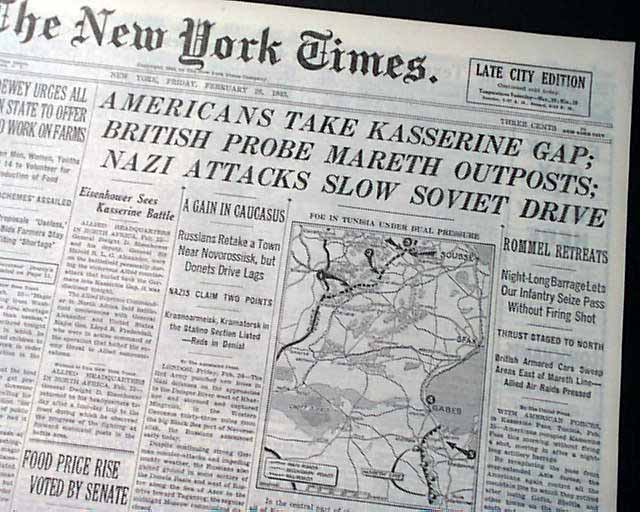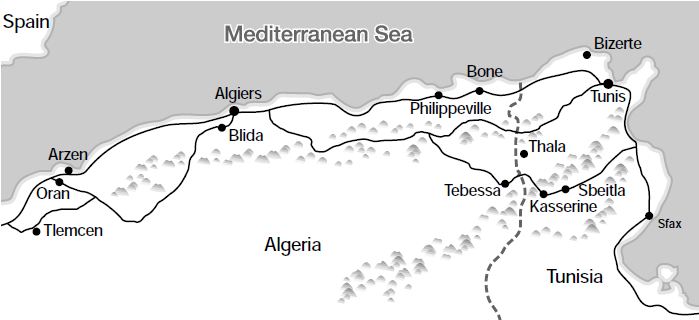
by Duke Doering
On February 18, 1943 twelve soldiers from the 1st Platoon of Sturgis’s Company C, 109th Engineer Battalion were prisoners of war (POWs) and marching toward Tunis, Tunisia. They had been captured early in the morning of February 17, 1943. They had the misfortune of being some of the first American troops that General Erwin Rommel’s German soldiers encountered on their famous attack at Kasserine Pass in North Africa.
Early in February Lieutenant Royal E. Lee, Company C 109th Engineer Battalion, and his platoon were just west of Faid Pass, near Sidi Bou Zed, laying mines and razor wire. Army Intelligence was not expecting the Germans to become aggressive, at least not in their direction. On Sunday, February 14, 1943 the Germans stormed through Faid Pass. The 34th Infantry Division, the command for the 109th Engineer Battalion, was attacked on February 15th and 16th on a peak South of Faid Pass. The German army then continued to storm through to Kasserine Pass, 15 miles away.
On February 16 the 109th Engineer soldiers were in a heated battle with superior German forces at Faid Pass. The South Dakota troops, in their first month at the front, had seen war from a close-up and most unfavorable aspect. After dark on February 16th the Americans were ordered to withdraw and move toward Sbietla. That night they tried to make good their escape.
It was in the early morning of February 17, somewhere on the flat lands with only a cactus patch for concealment, the Germans in their tanks rounded up the about 600 Americans, which included the 109th Engineer soldiers. These were some of the earliest United States prisoners captured by the Germans. 12 members of Company C were taken prisoner; Lieutenant Royal L. Lee, Robert J. Lodge, Francis Murray, William H. Caton, Owen Gorman, Richard M. Berends, Thomas M. Bouwman, Kenneth W. Brandon, Kenneth P. Gourley, Leo T. Baker, Wayne M. Hannant, and William C. Weimer. Captured with the Sturgis boys were Gordon J. Tjomsland from Headquarters Company, Rapid City, Harold McGregor from Lead, and Esquipula C. Gallegos from Edgemont. Most of the captives were men of the 109th Engineers on duty with the 168th Infantry Combat Team, which lost the greater part of one battalion.
When the 1st Platoon of Company C was detached from the rest of the 109th Engineer Battalion at Ain M’Iila, Tunisia early in February, 1943 to go with the 168th Infantry, there were few who could have realized that they would be in Prisoner of War (POW) camps until the war was over in 1945.
They were forced marched toward Tunis for a few days, then picked up by trucks and taken to Tunis where they were quartered in an old school building. Then they were flown to Naples, Italy in an old JU-52 German airplane. From there they were taken by train to Stalag 7A and later to Stalag 3B near Fürstenberg, Germany.
During their captivity, over 2 years, the men were fed the same rations as the German soldiers, but in lesser quantity, thinner soup, and less bread. The Red Cross boxes were their salvation, they came about every three weeks. The POWs were permitted to write a few post cards and letters, and there were not any restrictions on the amount of incoming mail.
Despite sickness, limited food, and lousy living conditions, all of these soldiers survived and were able to return to South Dakota in the summer of 1945.

You are invited to a free public lecture on Afrika Korps General Erwin Rommel on Saturday, March 14, 2020, at the South Dakota Air and Space Museum outside the Main Gate at Ellsworth Air Force Base.

